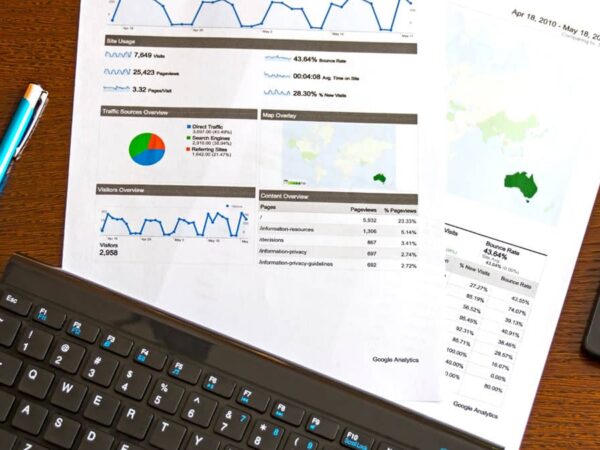Choosing the Best Pricing Strategy for Your Small Business
Choosing an effective pricing strategy helps you reach your business goals and builds trust with your customers.

Choosing an effective pricing strategy helps you reach your business goals and builds trust with your customers. The price of a product or service speaks volumes to a potential customer. It can tell them that the product or service is premium, a great value, cheap, or not worth it. It can be the difference between closing sales with your target customers and losing business.
Pricing strategy should be a part of your marketing and business strategy just like social media and customer service. It’s about more than simply setting the lowest price. Read on to find the best pricing strategy for your business.
What is a pricing strategy?
A pricing strategy is a process that a business uses to set prices for its products and/or services. Pricing is the amount a business charges for a product or service. A pricing strategy is how the business owner determines what that amount should be. There are many different kinds of pricing strategies. In this article, we will examine five common small business pricing strategies.
How to create a winning pricing strategy?
Do
- Show the value of your product or service. Give customers confidence that your product or service is worth it.
- Convince your customers to buy. Is it on sale? Is there a bundle deal? Are they so good that they never go on sale? Tell your customer!
- Give your customers confidence in your product. A price that is too low can raise questions about quality.
Don’t
- Don’t accurately portray the value of your product. Don’t under-sell yourself or your products and services.
- Make customers feel uncertain about buying. You don’t want customers to wonder “why is it so cheap?” or “is it worth paying this much”?
- Target the wrong customers. If your target customer is someone who appreciate luxury, make sure you price accordingly. If your target customer appreciates value, make that value clear.
5 Effective Pricing Strategies for Small Business
Every business is different, so there is no one strategy that is best. Many business owners will rotate strategies over time or blend different policies. Sometimes, one product, service, or segment of your business will call for a different pricing strategy than another. Often it will take some experimentation with the various strategies to land on the one that works best for your business. Here are five pricing strategies that are highly effective for small businesses.
Value-based or Premium Pricing
You set your prices according to what consumers think your product is worth.
Example: Starbucks uses value-based pricing to price their products based on their massive name recognition and brand loyalty. Customers associate the names Starbucks with high-quality coffee drinks and are willing to pay a premium price.
Pros
- Makes your brand appear more desirable
- Higher profit margins
Cons
- Higher cost of production and marketing
Best for:
Small businesses that have a considerable competitive advantage and know that they can charge a higher price without being undercut by a product of similar quality. Their competitive advantage can come from the unique or premium nature of the product or service, or from brand recognition.
Competitive Pricing
The policy of setting your prices based on what the competition is charging. This can be a good strategy in the right circumstances, such as a business just starting out.
Example : Brand A dominates the toothpaste market. Brand B wants to launch a new toothpaste, so it studies the market price and finds out that Brand A sells its toothpaste at $9 per tube. Brand B launches its product at $8.99 in order to give a psychological advantage to its pricing over its main competitor Brand A.
Pros
- Simple implementation
Cons
- Not good to use long-term since competitors will catch on and modify their strategy
Best for:
Small businesses that are just starting out and/or don’t have a lot of experience in that market or industry.
Price Skimming
A strategy by which a business charges the highest initial price that customers will pay and then lowers it over time. As the demand of the first customers is satisfied and competition enters the market, the business lowers the price to a more price-sensitive segment of the population.
Example: Apple uses price skimming when they introduce a new iPhone. They charge a very high price when the phone first comes out and customers are willing to pay because they want the latest product. Once other companies come out with like products, they lower the price to remain competitive.
Pros
- Allows businesses to maximize profits through early adopters
Cons
- Excess inventory may occur if this strategy fails
- The quality of the new service or product must justify the higher cost to be effective
Best for:
Small businesses that have products that are in high demand, like tech companies, or a highly anticipated new product or service, like a successful crowd-funded product or a viral favorite.
Cost-plus Pricing
This is one of the simplest pricing strategies. A business just takes the product production cost and adds a certain percentage to it.
Example: A bakery that makes pies that cost $10 to make including labor and ingredients may decide to add 20% to the cost and sell the pies for $12.
Pros
- Can provide predictable profits
- Simple to implement
Cons
- Not guaranteed to cover all costs since much of the calculation is an estimation
- Can be difficult to change prices when needed
Best for:
Small businesses with a cost advantage (i.e. their production costs and/or overhead are lower than the competition) or that are interested in using price transparency as a differentiator.
Penetration Pricing
In highly competitive markets, it can be hard for new companies to get a foothold. One way some companies attempt to push new products is by offering prices that are much lower than the competition.
Examples: An online news service that offers one month free or a food or beverage company that offers a new product at a reduced price to get customers to try it.
Pros
- Allows a product to be quickly adopted and accepted by customers
Cons
- Can create pricing expectations for customers – meaning they might always expect a low price and be dissatisfied if the price rises
- May reduce customer loyalty since most will be bargain hunters. Initial customers may not be your target customers.
Best for:
Small businesses looking to quickly break into a competitive market. It can also be used to introduce a new product or service to your existing customer base.
Penetration pricing strategy should be used with caution and only by businesses willing to set appropriate pricing expectations with their customers from the beginning. Phrases like “for first time customers,” “new customer/product discount,” “reduced pricing for the first session,” and “this week only” should be used frequently with this pricing strategy.
Setting a Low Price: A Cautionary Tale
When developing a business plan, owners often make the mistake of setting their price to match the lowest-price provider in the market. This approach often comes from a shallow understanding of direct competitors, and the assumption that the only way to win sales is by having the lowest price.
It is always important to do a thorough competitive or market analysis. Don’t exclusively look at your competitor’s pricing; look at the whole value of what they’re offering. Are they serving price-conscious consumers or an affluent niche? What are the value-added services, if any? How does your business compare?
An expert recommended rule of thumb is to set your prices somewhere in the middle of the competitive field. It is always easier to explain a price decrease to customers than a price increase.
Choosing the Best Pricing Strategy for Your Small Business
The most important factors influencing your pricing strategy are rooted in your business’s unique financial data and external conditions. This includes:
- Knowing what it costs to produce your products or provide your services
- Continuously monitoring these costs so you can quickly react to changes and maintain long-term profitability
- Knowing your market, your competition, and your customers
- Staying on top of emerging trends, supply chain threats, and consumers’ perceptions of your brand
Experts recommend adjusting your prices no more than once a quarter or less depending on your business type. Once you have a good understanding of your business finances, you can confidently experiment with different pricing strategies to find the most effective one for your business.
Do you have questions about inflation? Read this article to get expert tips on dealing with inflation as a small business.
This article was powered by Global Atlantic Financial Services.








